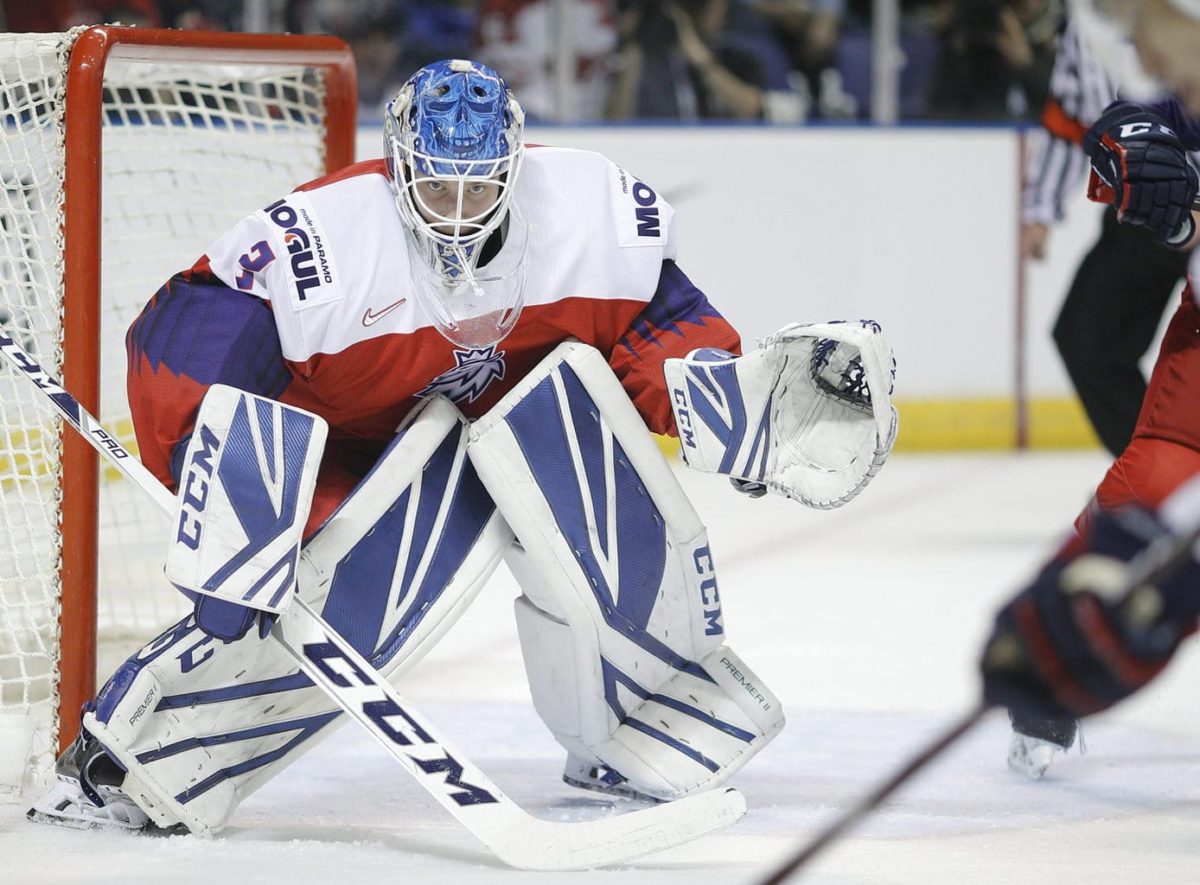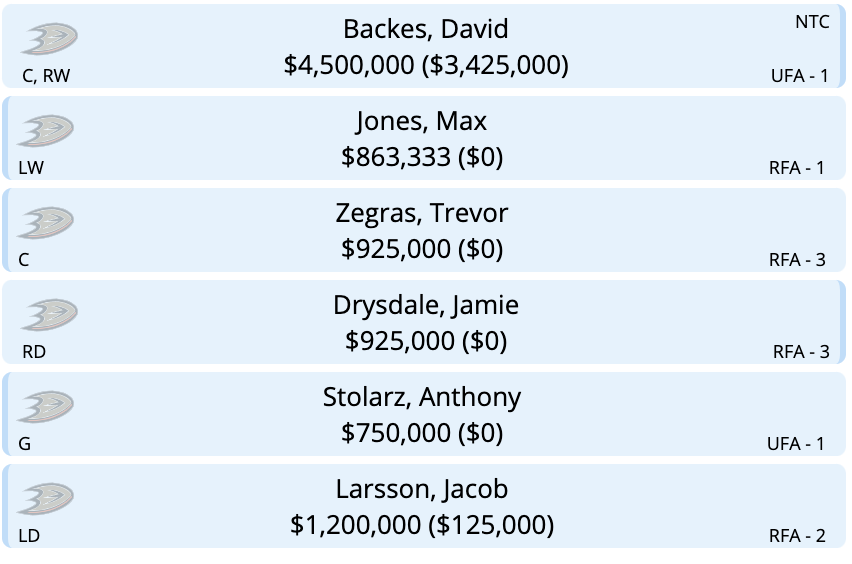With the announcement that the NHL would have a shortened, 56-game season came another exciting update for the Anaheim Ducks and the rest of their competition in the NHL – the taxi squad.
The NHL created the taxi squad to try to add an insurance policy for a potential coronavirus outbreak and as an opportunity to give teams a few more roster slots for players to get experience without the AHL or junior leagues in progress. NHL teams will be allowed to carry four to six extra players on their “taxi squad” that can practice with the NHL team and be available on short notice. This creates multiple options for the Ducks enabling them to develop young players and create cap space.
Taxi Squad Rules
CapFriendly has helpfully listed essential rules for the taxi squad.
These rules make the taxi squad an important place for the Ducks to keep young players who currently do not have anywhere else to play.
But there are a few crucial details that make it more than just a place to keep extra bodies and develop players conveniently. As James Mirtle of The Athletic outlines, some teams will use the taxi squad to secure additional space under the salary cap.
“Well, assuming teams take advantage of this in an aggressive fashion and carry fewer roster players for the bulk of the season, we could be talking about millions in savings per team. If the 21st, 22nd and 23rd players on rosters are all on a taxi squad instead of the NHL roster, and they’re on two-way contracts (which carry a lower salary in the minors), the cap savings could in extreme cases add up to more than $3 million per team.
If a team saving that much money kept that space open to accrue all season, using the taxi squad, they could then have roughly $14 million more available to spend by the trade deadline. A trade deadline that will occur just 26 days before the end of the regular season.”
(From ‘NHL taxi squads: How they will allow salary cap-strapped teams to save cash).’ The Athletic, 12/31/2020).
The Ducks are in a situation where they could both bank cap space and help develop young players.
Ducks Cap Saving Strategy
There are many variables in an NHL season and injuries or sickness could throw this off, but for the sake of argument, let’s say Bob Murray wanted to accrue more cap space during the season. To do that effectively, as Mirtle outlined, they would need to find players with two-way contracts who are currently waivers exempt for the taxi squad. Or they could move a veteran player with a one-way deal to a taxi squad if they aren’t worried about losing that player on waivers.
Entry-level contracts are all two-way contracts, which do not count against the salary cap when that player is not in the NHL. Since the taxi squad is considered the minor leagues for the purposes of the salary cap, the Ducks could send players to it and accrue cap space. That keeps them from having to use Ryan Kesler’s long-term injury relief (LTIR), which is the first step to accruing cap space. If they activated Kesler’s LTIR, by definition, they would not be under the salary cap and could not accrue cap space.
If the Ducks kept their roster at 20 players and added six to their taxi squad, they’d be able to slide under the salary cap maximum limit and accrue cap space.
The same principle that Mirtle describes in his example applies to the Ducks.
The Steel, Jones, Comtois, Backes Math
The Ducks would first need to put Max Jones on the taxi squad. He’s in the final year of his entry-level contract, so he is still waiver-exempt. Jones carries a cap hit of $863,333. That number, divided by 116 days, the length of the 2020-21 season, would save the Ducks over $7,442 every day he is on the taxi squad. That is provided the rest of the roster is below the upper limit of the salary cap.

Presumably, Max Comtois would replace Jones on the active roster. Comtois’ contract is cheaper than Jones’ saving the Ducks over $40,000 under the salary cap for a full season.
Jones should be an everyday NHL player, and it would be unwise to keep him out of actual games, but the Ducks could keep him on the taxi squad on off days and call him up before the deadline on game days.
Further, the Ducks could keep Steel on the active roster and David Backes on the taxi squad. Backes is not waiver exempt, but if another team claimed him on waivers, it would be a savings of $4.5 million under the salary cap.
Backes on Taxi Squad Is a Win-Win
Considering Backes’ contract, age and production, teams are unlikely to claim him, but the Ducks still save more, keeping him on the taxi squad versus on the active roster. Veteran players on one-way contracts who have been demoted to the AHL still count against the salary cap, but not as much as they would on the roster.
Backes is a perfect example. If the Ducks put Backes on the taxi squad, they’d save the league minimum, $700,000 plus $375,000 under the cap. If you compared that to Sam Steel, whose cap hit is $863,333, putting Backes on the taxi squad rather than Steel would save the Ducks an additional $211,667 for the full season.

If they do keep Jones and Backes on the taxi squad, their roster might look like this:

That would potentially give Anaheim $888,334 of cap space. It’s not a ton but, combined with the trade of a player; it can help.
The LTIR Factor
One could argue that merely activating Kesler’s potential LTIR of $6.875 million is worth far more and requires far fewer moving parts than what the Ducks would accrue with this taxi squad strategy. Don’t forget that Kesler’s LTIR could be activated at any time during the season when the Ducks need it, so that could come in addition to the cap space accrued using the taxi squad strategy.
The Pay Not To Play Issue
Is this realistic? In a normal situation, yes, but for a team that is suffering from financial losses tied to the pandemic, continuing to pay a player millions not to play to accrue cap space might not be something Ducks ownership is willing to do.
That rings especially true when you consider they are still paying Corey Perry to play for the Montreal Canadians and Kesler, who will never play again.
Taxi Time
There would be four remaining spots open, with Backes and Jones on the taxi squad and only 20 players on the active roster. According to the rules, the Ducks would need to add a goalie. The obvious answer would be Anthony Stolarz. He has NHL experience, which would make him a more attractive target than Lukas Dostal, who was playing in Europe and presumably has a spot there if he doesn’t make the team.

Dostal might be popular among fans given his strong play in Europe. Still, he hasn’t had any professional experience in North America, let alone the NHL, so it might not be wise to put him there for his first North American pro experience.
With Stolarz occupying the third spot on the taxi squad, there would be three slots open.
The obvious addition is Trevor Zegras, who just became the MVP of the World Junior Championship, as long as his play doesn’t force Murray to put him on the active roster.
Defense Could Save More Money
With two spots left, it would make sense to add at least one defenseman, maybe two.
Now that Jamie Drysdale has nowhere to play besides Ducks camp, he would be the next obvious choice. The Ontario Hockey League has pushed its start date again, so it is unclear when Drysdale could play there. Even if he does, there won’t be any checking, which would not be suitable for developing the Ducks’ most important defensive prospect.

Putting Drysdale on the taxi squad would be smart. Still, to give him a chance to play, the Duck would need to add another waiver exempt player to the active roster so ensure they wouldn’t lose any of their current defensemen to a waiver claim. For that reason, Josh Mahura, who is still on his entry-level contract and waiver exempt, should be placed on the active roster, with Larsson on the taxi squad. That way, Drysdale and Mahura could be interchanged as often as needed without winding up on waivers.
Jacob Larsson would have to be placed on waivers to join the taxi squad, but better they do it once rather than repeatedly. Additionally, with Larsson off the active roster, the Ducks would save even more cap space, potentially more than $1.2 million over the entire season.
The taxi squad would look like this:

Using the taxi squad, Murray has an opportunity to test the readiness of some of his young players at the highest level while also saving the team money under the salary cap. While it would take a fair amount of tinkering, the opportunity for a general manager to do both should be appealing.